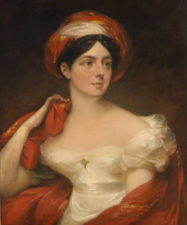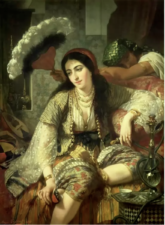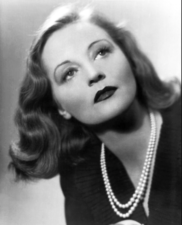Katherine Swynford was born Katherine de Roët, the daughter of a minor court official who served in the court of Queen Philippa of Hainault, the wife of Edward III of England. Her family were prominent landowners in Hainault, on the modern French/Belgian border, but she had no ties to royalty and her aristocratic connections are uncertain. At the age of two, due to her father’s good service as a courtier, Katherine and her sister Philippa were placed in the household of Queen Philippa as a companion to her children – a considerable honour for the Roët family. Being raised with the royal children, she received an exceptional education for a medieval woman, encouraged to read and participate in the high cultural achievements of the court. She learned about court politics and how to behave appropriately amongst the highest people in the land. Katherine was also reputed to be one of the most beautiful women of her age.
As she entered her teens, Katherine moved into the household of John of Gaunt, the third son of Edward III, and his wife Blanche, Duchess of Lancaster in her own right, to help with the raising of the couple’s children. John of Gaunt was highly-educated and promoted education in his own household, and through offering university scholarships and patronage to music and the arts. He also supported the use of the English-language at parliament and more widely, amongst a French-speaking aristocracy. He was an active patron of the English writer Geoffrey Chaucer, who he supported throughout his career. John and Blanche were known to be famously in love and Blanche is believed to have inspired Geoffrey Chaucer’s The Boke of the Duchesse. Katherine’s work for the family was to bring her and her family the patronage of one of the wealthiest landowners in England.
Katherine was married probably before 1362, likely when she was around twelve, to the knight Sir Hugh Swynford, the lord of the manors of Coleby and Kettlethorpe. Hugh was also in the service of John of Gaunt and, while a landowner, had received a poor inheritance from his father. This marriage was likely arranged by Gaunt and was a good match for both parties, with Katherine marrying about her rank, and Hugh receiving a highly-educated and well-connected wife. Around the same time, Katherine’s sister, Philippa, was married to Geoffrey Chaucer, the writer, another marriage likely arranged by Gaunt as a reward to the merchant’s son for his services to the family. The Chaucers was a famously unhappy marriage and Philippa is often thought to have inspired Chaucer’s derogatory commentary on marriage and shrewish wives!
Hugh was probably a decade older than Katherine and earned most of his income through working as a soldier for John of Gaunt. He was to spend much of his married life on campaign with Gaunt, fighting in France, while Katherine managed his estates and remained in service to Blanche and later her daughters. Despite this, the couple had at least four children, three daughters and a son. Their eldest daughter, Margaret, was born around 1362 and, through the patronage of Gaunt, was placed into a high-ranking nunnery, along with Philippa’s eldest daughter Elizabeth. Dedicating a daughter to God may have been a Roët family tradition, as Katherine and Philippa’s elder sister had also been placed in a nunnery in France. Katherine’s second daughter Blanche was placed, at age two, in the household of Blanche, Duchess of Lancaster as a companion for her daughters. Hugh died in 1371, while on campaign in France.
In 1868, Blanche, Duchess of Lancaster had died shortly after childbirth, and in 1371, John of Gaunt married Princess Constance, de jure Queen of Castile, who was seeking to regain her throne after it was taken by Pedro the Cruel. She was only 17 and he was 31. This political marriage placed John as King consort to the Spanish throne. Their marriage was one of political convenience, both sharing the ambition of regaining the Spanish throne but little else, and they often spent time living apart. They had two children together – their daughter ‘reclaimed’ the Spanish throne through marrying the heir of the monarch. John of Gaunt, hearing of Hugh’s death, invited Katherine to rejoin his household as part of his wife’s entourage in 1372, alongside her sister Philippa. Katherine’s service to both Blanche and Constance brought her favour in the Lancastrian household and over the years she received a number of financial gifts, including annuities and valuable goods.
It was also around this date that Katherine became the mistress of John of Gaunt, giving birth to their first child around 1372. It is unlikely that her affair with John had begun before her widowhood as there is no evidence of this and she had not seen him for some time previously due to his campaigns in France. It was a relationship prohibited both because John was married and because he was godparent to her daughter Blanche (which created a tie of affinity in the eyes of the church), but was not unusual amongst their social class during the period where courtly love romanticised adultery in a world of arranged marriages. Around the same time, John increased Katherine’s annuity to fifty marks a year (around £6,000); she was also given the wardship of her children and allowed to administer her son’s estates until his seniority. Over the length of their relationship, John was to gift to Katherine a number of estates and monies in her own right; indeed, the births of their children can often be dated due to the granting of lands on each occasion. The couple are known to have had four children, three sons and a daughter, who all took the surname Beaufort.
As their affair developed, Katherine left Constance’s household, but remained in the household of John’s daughters to his first wife, Blanche. Despite an attempt at discretion, their affair eventually became notorious, flamed by the fact that John’s wars in France were going badly and he was becoming increasingly unpopular at home as regent during the minority of the King Richard II. His significant wealth, as well as his claims to royalty in Spain, made people anxious that he was a serious threat to the English throne. The introduction of an unpopular poll tax led to the Peasant’s Revolt of 1381 and John’s position was seriously undermined. While in other circumstances, his affair might have went unremarked, it was now used as political fuel to demonstrate his power-hungry, treasonous behaviour. Katherine, herself, became notorious as a ‘whore’ and a ‘concubine’, thought to be driven by greed and ambition.
As a result, John and Katherine felt it wise to end the relationship, and John made a concerted effort to demonstrate his reconciliation with his wife Constance, an attempt that was successful for a number of years. John and Katherine rekindled their relationship again around 1393, where there is evidence of her receiving expensive damask silk as a Christmas gift. In 1394, Constance died after a short and unexpected illness, and John immediately applied to the Pope for a dispensation to marry Katherine. They married around January 1396. This was highly unusual, both because Katherine was his mistress and because she was not of high enough social status. After their marriage, Katherine and John had their four children made legitimate, which entitled them to inherit property. All three sons were to do exceptionally well for themselves as courtiers, or in the case of Henry, as a leading Bishop, who only narrowly missed being appointed Pope. Their daughter Joan married into the Neville family and so was grandmother to both Edward III and Richard III. Their son John was great-grand-father to Henry VII. John of Gaunt died in 1399, which caused a crisis in inheritance as the King, Richard II, had banished his heir, Henry, son of Blanche, mainly because the Lancaster estates has started to outstrip that of the King himself and so threatened his authority. Henry was angered and returned to take the thrown for himself as Henry IV, and so Katherine became stepmother to the King. Katherine and her children remained favourites in both royal households.
Katherine retired to Lincoln, where she lived in the Priory near the Cathedral and where her Swynford estates were based. It is possible that she also had mercantile interests, probably in the lucrative wool trade, as she had homes in several port towns and was known to have dealings with various merchants, yet her records have not survived. While she became notorious for her adulterous relationship, she was also known as a very pious woman, not only gifting money and children to the church, but renowned for her religious devotion. Her tomb is in Lincoln Cathedral. When she died she was extremely wealthy. She had an annual income of over half a million in modern terms from one of her estates alone. Yet, her greatest legacy was her children. Nearly every monarch in Europe carries her blood, as do five American Presidents, Sir Winston Churchill, and numerous others.
Further Reading
Alison Weir, Katherine Swynford: the Story of John of Gaunt and his Scandalous Duchess (Vintage, 2008).
As well as some Dan Brown novels, Katie Barclay spent her holiday in Spain learning about Katherine and also her descendants: Margaret Beaufort and Mary, Queen of Scots. She thinks Katherine provides a fascinating discussion point to think about women’s choices in the past: we do not know whether she was motivated by love, circumstance or desire for power, or to what extent she made choices about her relationships with the men who shaped her life, but we can see the ways that made sure she made the most of the opportunities available to her as a woman.


